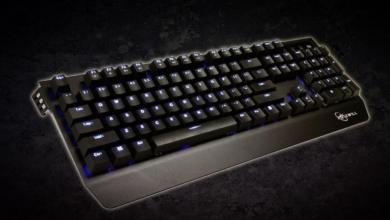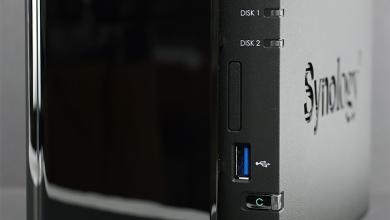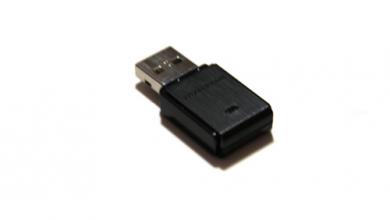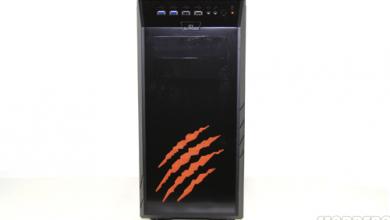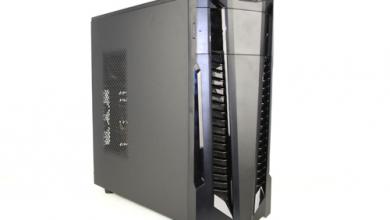Rosewill RGS-108P POE Gigabit Network Switch
Testing
Since the Rosewill RGS-108P POE Gigabit Network Switch is labeled as a business class switch and more specifically enterprise class switch according to the box, I pit the Rosewill RGS-108P POE Gigabit Network Switch against two different Cisco switches. The 1st Cisco Switch is the small business class switch, the SG-300-10. The enterprise class switch used during the test is a Cisco Catalyst 2960G-8TC.
In order to eliminate as many configuration variables with the managed Cisco switches, I wiped the configuration files and tested with out a configuration file. Both switches will switch packets in their default states. The only configuration change that was made was during the Jumbo Frames testing. In order to enable Jumbo Frames support on the Cisco switches one command needs to be entered and the configuration file needs to be saved. According to the manufacture the The Rosewill RGS-108P POE Gigabit Network Switch automatically supports Jumbo Frame detection.
Test System #1
| System Configuration | |||
| CPU | Intel i7 4770K | ||
| Ram | Adata XPG DDR3 2133 MHz 8 GB | ||
| GPU | EVGA nVidia GTX 650 TI Boost OC | ||
| Hard Drives | Kingston HyperX 120 GB SSD | ||
| OCZ 120 GB SSD | |||
| Power Supply | NXZT Hale v2 1000 Watt power supply | ||
Test System 2
| System Configuration | |||
| CPU | Intel i7 3770K | ||
| Ram | Adata XPG DDR3 2133 MHz 8 GB | ||
| GPU | EVGA nVidia GTX 650 TI Boost OC | ||
| Hard Drives | Kingston HyperX 120 GB SSD | ||
| Kingston 250 GB SSD | |||
| Power Supply | Cooler Master V1000 1000 Watt power supply | ||
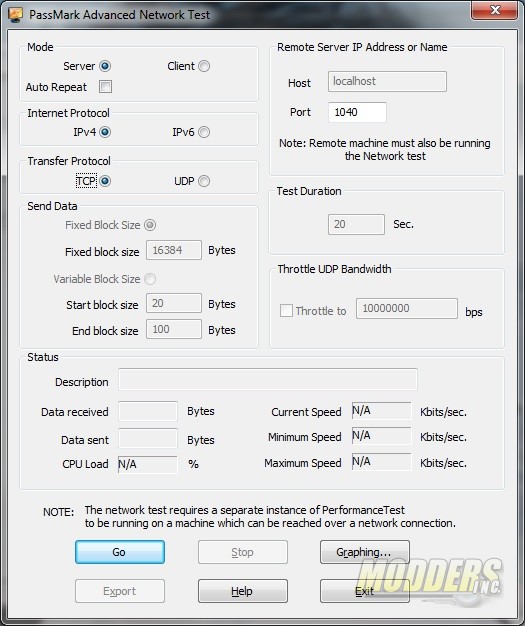 |
Testing was performed using Passmark’s Performance test 8.0 and using the network test portion of the software. Each test PC was directly connected to each switch at the time of testing and the switches were not connected to any other network or network device. Default settings were used in the testing software on both the server and the client PCs. Initially Jumbo Frames was turned off for the first test. I tested with the TPC protocol as most data that crosses a network is TCP.
The built in network card on the motherboard with the latest drivers were used in the testing.
I will be presenting all three results side by side. On the left is the Rosewill RGS-108P POE Gigabit Network Switch, in the center is the Cisco SG-300 and on the right is the Cisco Catalyst 2960G
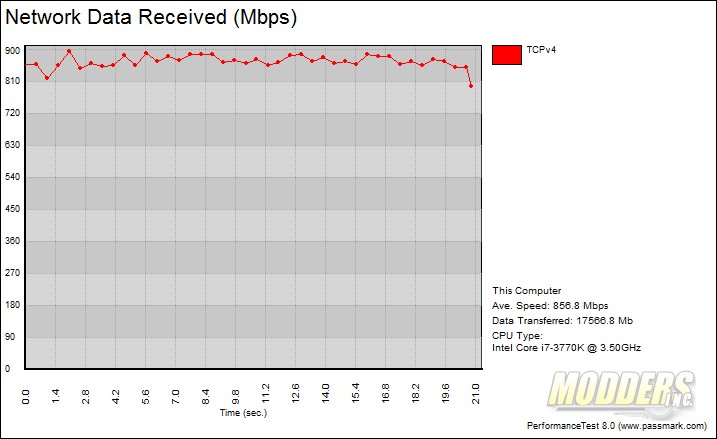 |
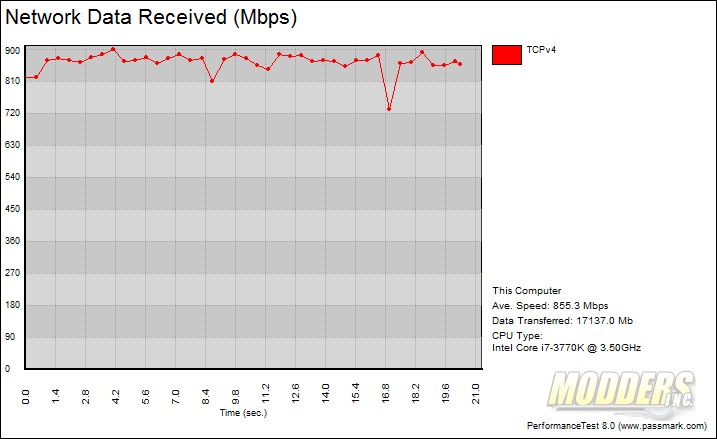 |
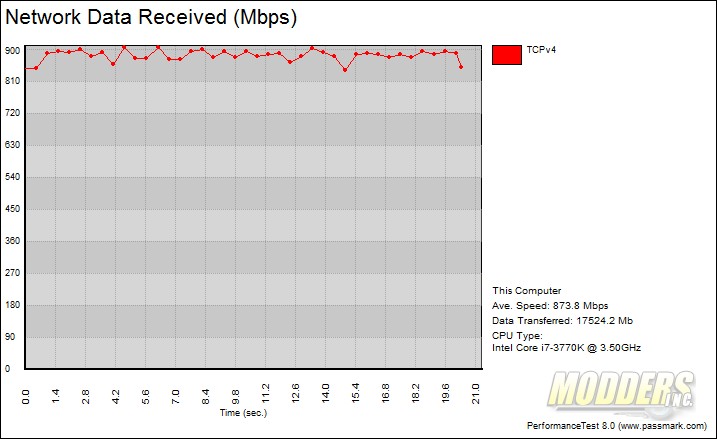 |
| Network Test – No Jumbo Frames | ||
In the 1st network test the Rosewill managed an average transfer speed of 856.8 Mbp/s. The Cisco SG-300 came in at 855.3 Mbp/s and the Cisco 2960G averaged 873.8 Mbp/s.
Jumbo Frames
Before moving on to the next set of tests, I want to give a very brief overview of a network technology called Jumbo Frames. Data the travels across the network is broken up into chunks of data that contain the link layer header and protocol information as well as the data payload. Ethernet (10/100) frames are limited to 1500 bytes for the data payload. With the MAC Addresses, headers, CRC data, VLAN tagging information the complete size of the Frame is 1522 bytes. In a few exceptions such as FDDI and Fiber channel, frames large than 1500 bytes are not allowed.
Gigabit Ethernet allows Jumbo Frames. A Jumbo Frame is an Ethernet frame that exceeds 1500 bytes. Conventional Jumbo Frames allow 9000 bytes of payload. While the rest of the framing information does not change, such as source and destination MAC addresses, VLAN information, etc., a typical Jumbo Frame is 9022 bytes.
The main reason to enable Jumbo Frames in networking is to increase network throughput while at the same time reducing CPU overhead. Using a larger frame size means more data can be transmitted across the network using fewer packets. A Jumbo frame contains six times the data than a standard Ethernet frame. By transmitting more data per frame, there are less frames traveling across the network, thus increasing throughput and since there are less frames being processed CPU over head is reduced.
In order for Jumbo Frames to work, it MUST be enabled on the network cards on the PCs, switches, and servers. End to end connectivity must all support and agree on the frame size. Jumbo Frames are enabled in the drivers for the network cards on servers and PCs.
There is a reason that Jumbo Frames is not enabled by default. If the switch doesn’t support Jumbo Frames, the packet will be dropped and will not be forwarded. For the egress for your network, it is possible that the router, gateway, or firewall may drop or will most likely fragment the packets. Jumbo Frames can also introduce extra latency in the network that can impact performance of latency sensitive applications such and Video and Voice over IP.
Next I enabled Jumbo Frames on each network card in the test PCs as well as in the configuration of both of the Cisco Switches. Again the results will be presented as Rosewill, Cisco SG300 and Cisco 2960G
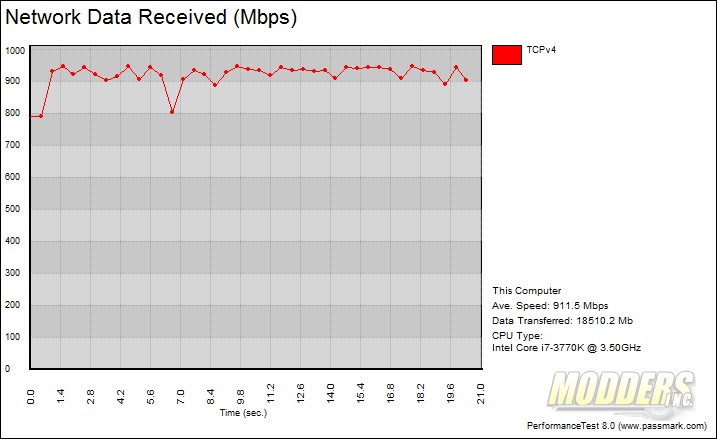 |
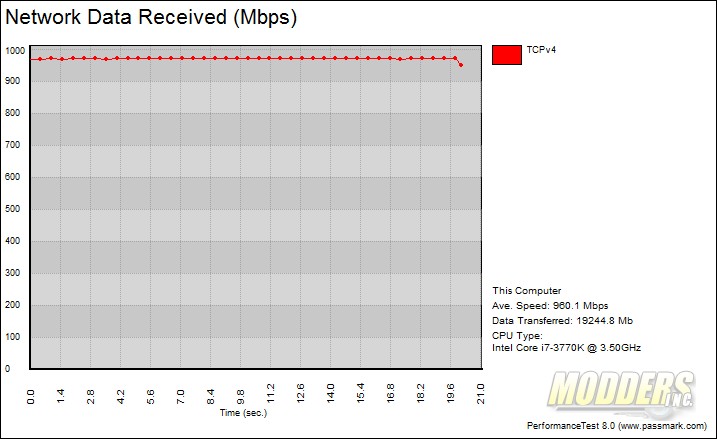 |
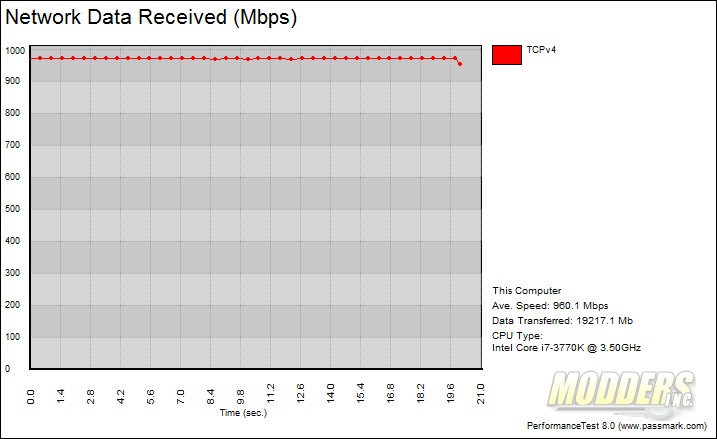 |
| Network Test – Jumbo Frames enabled | ||
In this test, you can see the effect of Jumbo Frames on the network. Tthe Rosewill RGS-108P POE Gigabit Network Switch increased to an average transfer speed of 911.5 Mbp/s with some downward spikes with transfer speed reaching around 800 Mbp/s. Both the Cisco switches averaged 960.1 Mbp/s with Jumbo Frames enabled. The Rosewill RGS-108P POE Gigabit Network Switch lack the more advance features of the Cisco switches which is why there are the peaks and valleys in the test results.



